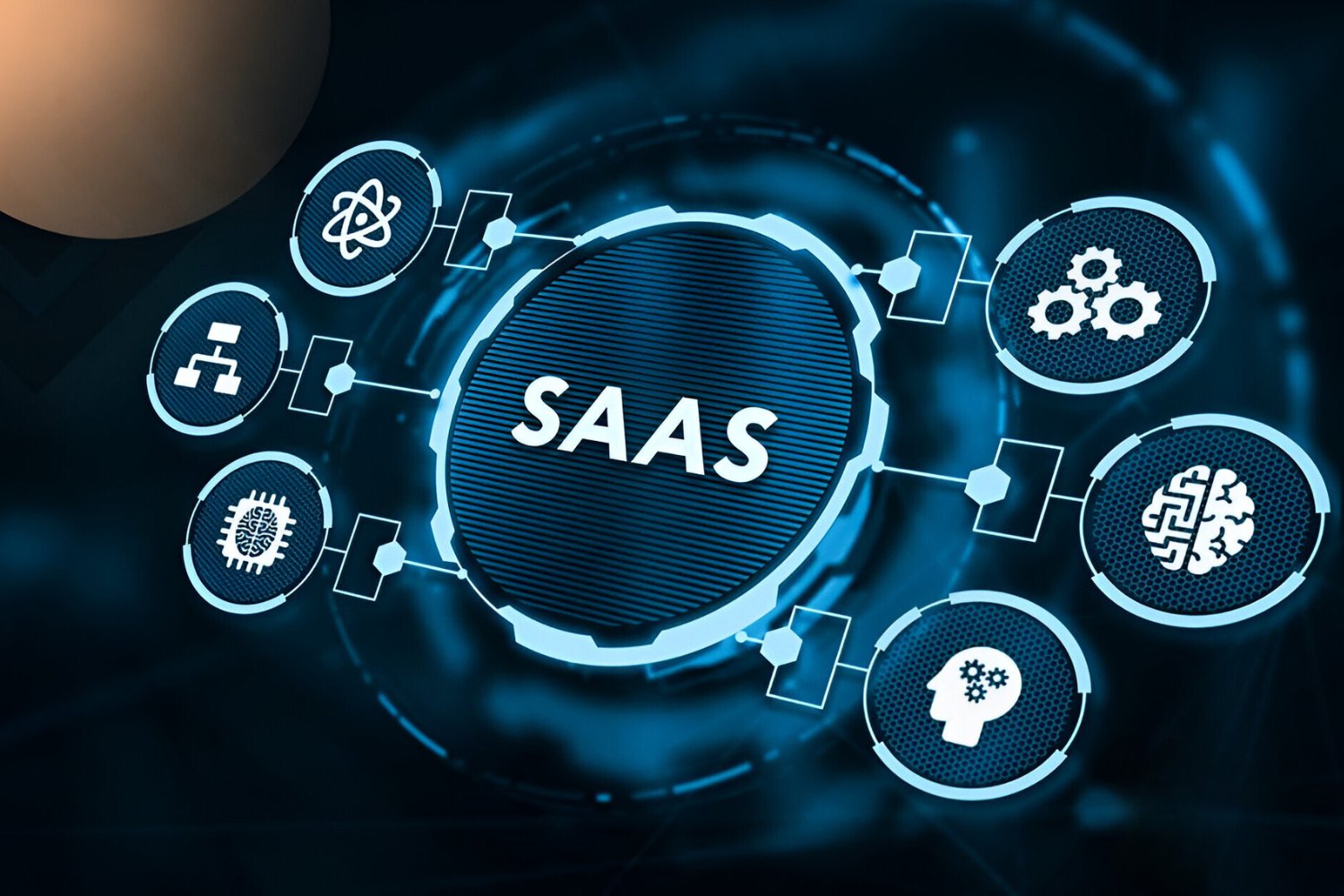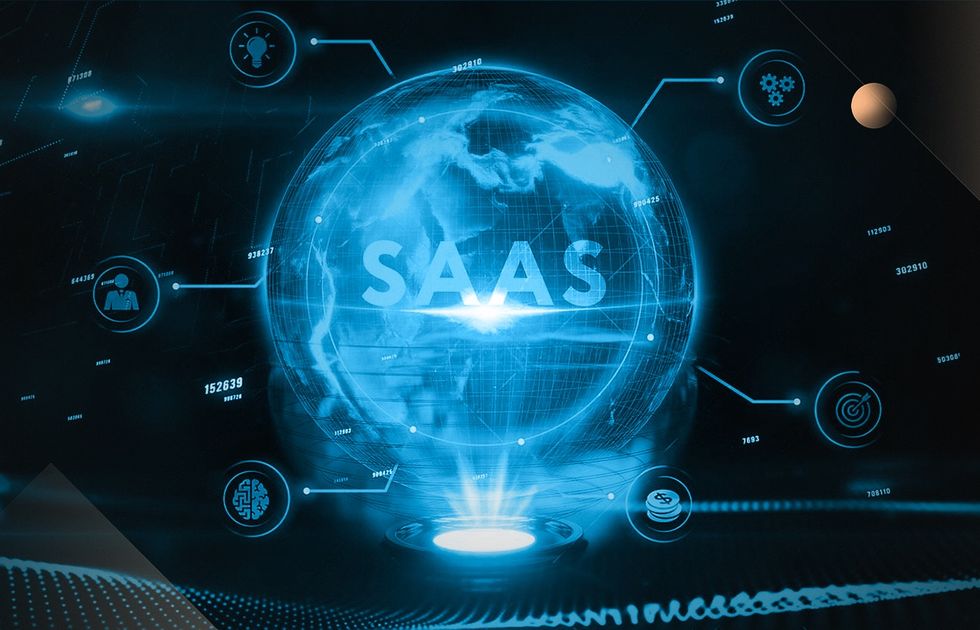Introduction
The world of technology is constantly evolving, and businesses are always on the lookout for innovative solutions to streamline their operations and improve their bottom line. One such solution that has gained significant popularity in recent years is Software as a Service (SaaS). SaaS offers numerous advantages to businesses of all sizes and industries, revolutionizing the way they operate and access software applications.
SaaS is a cloud-based software delivery model where applications are hosted and maintained by a vendor, and users can access them over the internet. This eliminates the need for businesses to invest in costly infrastructure and hardware, as well as the hassle of software installation and maintenance. In this article, we will explore the advantages of SaaS and how it can benefit businesses in various ways.
From cost savings to enhanced data security and privacy, SaaS offers a range of advantages that make it an attractive option for businesses seeking efficiency and flexibility. Let’s delve into each advantage in detail to understand why SaaS has become a game-changer for businesses worldwide.
Cost Savings
One of the primary advantages of SaaS is the significant cost savings it offers to businesses. Traditional software often requires a substantial upfront investment in licenses, infrastructure, and IT staff to manage and maintain the software. With SaaS, businesses can eliminate these expenses and shift to a subscription-based pricing model.
SaaS providers typically offer flexible and scalable pricing plans that allow businesses to pay only for the resources and features they need. This pay-as-you-go model ensures that businesses avoid overpaying for unused software and can easily scale up or down as their requirements change.
Additionally, SaaS eliminates the need for businesses to invest in expensive hardware and infrastructure to host and run the software. The responsibility of hosting, maintenance, and troubleshooting lies with the SaaS provider, allowing businesses to divert their IT resources and budgets to other critical areas of their operations.
Furthermore, SaaS reduces the cost associated with software updates and upgrades. Traditional software often requires costly and time-consuming installations and manual updates. With SaaS, updates are automatically implemented by the provider, ensuring businesses always have access to the latest features and enhancements without any additional expenses or disruptions.
Overall, the cost savings provided by SaaS can be significant, enabling businesses to allocate their financial resources more efficiently and invest in growth opportunities.
Scalability and Flexibility
Scalability and flexibility are essential considerations for businesses, especially as they grow and their needs change. SaaS offers unparalleled scalability and flexibility compared to traditional software models.
With SaaS, businesses can easily scale up or down their software usage based on their evolving requirements. Whether they need to accommodate an increase in users or add new features and functionality, SaaS allows businesses to quickly and seamlessly adjust their software usage without any disruption to their operations.
Furthermore, SaaS provides businesses with the flexibility to access their software applications from anywhere, at any time, as long as they have an internet connection. This level of accessibility is particularly valuable in today’s increasingly remote and mobile workforce. Employees no longer need to be tied to a specific location or device to access and use the software, allowing for greater flexibility and productivity.
In addition, SaaS offers the flexibility to integrate with other software applications and systems, enabling businesses to create a seamless and interconnected ecosystem. This integration capability eliminates the need for manual data entry and reduces the risk of errors, improving overall efficiency and streamlining workflows.
Moreover, SaaS providers are constantly innovating and adding new features and functionalities to their software offerings. This continuous improvement ensures that businesses can stay ahead of the curve and leverage the latest technological advancements without the need for frequent software replacement or complex migration processes.
In summary, the scalability and flexibility provided by SaaS empower businesses to adapt to changing needs, enhance productivity, and leverage the latest technology trends without any significant disruptions or additional costs.
Accessibility and Convenience
One of the key advantages of SaaS is the accessibility it offers to businesses. With SaaS, users can access their software applications and data from any device with an internet connection, making it highly convenient and flexible.
Traditional software often requires installation on specific devices, limiting access to particular locations or offices. In contrast, SaaS eliminates these limitations, allowing employees to work remotely or access software applications while on the go. This accessibility promotes collaboration and productivity, as teams can work together seamlessly, regardless of their physical location.
SaaS also removes the burden of software maintenance and updates from the end-user. With traditional software, users are responsible for keeping their applications up to date and ensuring compatibility with hardware and operating systems. In contrast, SaaS providers handle regular updates and maintenance, freeing up time and resources for businesses to focus on their core competencies.
Additionally, the SaaS model facilitates quick and easy deployment of software applications. Users can access the software through a web browser, eliminating the need for installation and configuration. This streamlined process saves businesses valuable time and minimizes disruptions, allowing them to start using the software immediately.
Moreover, SaaS providers typically offer a user-friendly interface and intuitive features, making it easy for employees to navigate and utilize the software without extensive training. This ease of use enhances user adoption and reduces the learning curve, ensuring a smooth transition for businesses.
In summary, the accessibility and convenience of SaaS empower businesses to work efficiently from anywhere, collaborate seamlessly, and eliminate the burden of software maintenance and updates.
Regular Updates and Maintenance
One of the significant advantages of using SaaS is the regular updates and maintenance provided by the SaaS providers. Traditional software often requires businesses to manually install updates and handle maintenance tasks, which can be time-consuming and costly. With SaaS, these responsibilities are shifted to the provider, ensuring that businesses always have access to the latest features and enhancements.
SaaS providers continuously monitor and improve their software offerings, rolling out updates and upgrades on a regular basis. These updates not only introduce new features but also address any security vulnerabilities or performance issues, ensuring that businesses are protected and can operate smoothly.
By outsourcing updates and maintenance to the SaaS provider, businesses can save time and resources that would otherwise be spent on managing software updates internally. This allows them to focus on their core business activities and strategic initiatives, rather than getting weighed down by software maintenance tasks.
Furthermore, SaaS updates are typically seamless and non-disruptive. Users do not need to worry about compatibility issues or the need to reinstall the software. The updates are applied automatically in the background, ensuring a smooth and uninterrupted user experience.
Another advantage of regular updates and maintenance is that businesses can stay ahead of the curve in terms of technology. SaaS providers consistently incorporate new technologies and industry best practices into their software offerings. This ensures that businesses have access to the latest advancements without the need for expensive upgrades or migrations.
Ultimately, the regular updates and maintenance provided by SaaS providers allow businesses to focus on their core competencies, stay secure, and leverage the latest features and enhancements without the hassle of managing software updates themselves.
Improved Collaboration and Efficiency
SaaS plays a significant role in improving collaboration and efficiency within businesses. With traditional software, collaboration can be hindered by limited access and manual data sharing processes. SaaS breaks down these barriers and fosters collaboration by providing a centralized platform accessible to all team members from any location.
Team members can work in real-time, share information, collaborate on projects, and communicate seamlessly through the SaaS software. This collaborative environment enhances productivity, promotes teamwork, and allows for efficient knowledge sharing.
SaaS also offers features such as document sharing, version control, and simultaneous editing. These capabilities ensure that team members are always working on the most up-to-date files, avoiding conflicts and versioning issues. It streamlines the collaboration process and minimizes the time wasted on manually merging changes.
Furthermore, SaaS solutions often include built-in communication and messaging tools, enabling team members to communicate and collaborate within the software itself. This eliminates the need for switching between different applications and enhances productivity by keeping all relevant conversations and discussions in one centralized location.
Moreover, SaaS provides businesses with comprehensive data management capabilities. Data can be securely stored, organized, and accessed within the SaaS platform. This eliminates the need for manual data storage and retrieval processes, reducing the chance of errors and improving overall efficiency.
SaaS also offers analytics and reporting functionalities that provide businesses with valuable insights to enhance decision-making. Real-time data and performance metrics are easily accessible, allowing businesses to monitor their progress and identify areas for improvement.
By improving collaboration and efficiency, SaaS empowers businesses to work more effectively, make informed decisions, and ultimately achieve their goals more efficiently.
Focus on Core Competencies
One of the significant advantages of adopting SaaS is that it allows businesses to focus on their core competencies. Managing and maintaining software internally requires significant time, resources, and expertise that could otherwise be allocated to activities that directly contribute to the business’s strategic goals.
By utilizing SaaS, businesses can offload the responsibility of software management to the SaaS provider. This includes tasks such as software installation, configuration, updates, and maintenance. This frees up valuable internal resources and allows businesses to redirect their focus towards their core competencies.
For example, instead of spending time and effort on managing software updates and troubleshooting technical issues, IT teams can concentrate on more strategic initiatives, such as enhancing cybersecurity measures or implementing innovative technologies that drive business growth.
SaaS also enables businesses to access specialized software solutions tailored to their industry or specific needs. Rather than investing in developing and maintaining software internally, businesses can leverage the expertise of the SaaS provider and benefit from their continuous development and improvement efforts.
Outsourcing software management to SaaS providers also minimizes the risks associated with technology obsolescence. SaaS providers are responsible for keeping their software updated with the latest technologies and industry standards. This ensures that businesses can constantly leverage cutting-edge tools and capabilities without the need for frequent software replacements or costly upgrades.
Furthermore, SaaS allows businesses to rapidly adopt new software applications to address specific needs or capitalize on emerging opportunities. This agility in software deployment enables businesses to stay adaptable and responsive to market demands, giving them a competitive edge.
In summary, by entrusting software management to SaaS providers, businesses can focus on their core competencies, optimize internal resources, access specialized solutions, and stay agile in an ever-evolving business landscape.
Easy Integration and Customization
SaaS offers businesses the advantage of easy integration and customization, allowing them to optimize their software ecosystem to meet their specific needs. Integration with existing systems and applications is seamless, enabling businesses to create a unified and interconnected environment.
SaaS providers often offer a range of integration options, including APIs (Application Programming Interfaces) and pre-built connectors. These integration capabilities allow businesses to connect their SaaS applications with their CRM systems, ERP systems, or other software platforms, ensuring smooth data flow and eliminating the need for manual data entry or duplicate data storage.
Furthermore, SaaS allows for easy customization to align with a business’s unique requirements. Through configuration options and user-friendly interfaces, businesses can personalize the software to match their specific workflows, terminology, and branding. This customization ensures that the software solution is tailored to the business’s needs, enhancing efficiency and user adoption.
In addition to customization, SaaS providers often offer a marketplace or an ecosystem of third-party integrations and add-ons. This allows businesses to enhance their software functionality by integrating with specialized tools and services that complement their operations. Whether it’s project management tools, marketing automation software, or data analytics platforms, businesses can easily extend the capabilities of their SaaS applications.
Moreover, SaaS providers regularly update and improve their software based on customer feedback and industry trends. This collaborative approach ensures that businesses have a voice in shaping the software’s future development and can request specific features or enhancements.
Easy integration and customization options offered by SaaS providers empower businesses to create a tailored and interconnected software ecosystem. This ability to seamlessly merge different applications and personalize the software ensures a cohesive and efficient workflow that aligns with the unique needs of the business.
Reduced IT Dependencies
Another significant advantage of SaaS is the reduced IT dependencies that it offers to businesses. Traditional software often requires extensive IT infrastructure, expertise, and resources to manage and maintain. SaaS, on the other hand, minimizes the reliance on internal IT departments and reduces the associated costs and complexities.
With SaaS, businesses no longer need to worry about hardware procurement, software installation, or infrastructure management. The responsibility of hosting, maintaining, and updating the software lies with the SaaS provider. This eliminates the need for dedicated IT personnel to handle these tasks, freeing up valuable resources within the organization.
Without the burden of managing software infrastructure, businesses can reallocate their IT resources to more strategic initiatives that directly impact the organization’s growth and success. IT teams can focus on innovation, implementing new technologies, and enhancing cybersecurity measures, rather than spending time on routine maintenance tasks.
Furthermore, SaaS providers have extensive expertise in managing and optimizing their software platforms to ensure high performance and availability. This expertise eliminates the need for businesses to invest in acquiring specialized skills or knowledge to manage complex software infrastructure.
Moreover, SaaS reduces the need for businesses to invest in costly hardware upgrades and expansions. As the software is hosted in the cloud by the SaaS provider, businesses can scale their operations without the need for additional on-premises infrastructure. This scalability is particularly beneficial for businesses experiencing rapid growth or fluctuating resource requirements.
In addition, SaaS providers often offer round-the-clock customer support to address any technical issues or concerns. This allows businesses to rely on the expertise of the SaaS provider’s support team rather than dedicating internal IT resources to troubleshoot problems.
In summary, SaaS reduces IT dependencies and enables businesses to focus on strategic initiatives rather than routine software maintenance. This shift allows organizations to optimize their IT resources, enhance their agility, and leverage the expertise of SaaS providers.
Enhanced Data Security and Privacy
Data security and privacy are paramount concerns for businesses in the digital age. SaaS offers enhanced data security measures compared to traditional software, ensuring the confidentiality, integrity, and availability of sensitive information.
SaaS providers are highly invested in maintaining robust security practices to protect their users’ data. They employ advanced security technologies, such as encryption, firewalls, and multi-factor authentication, to safeguard data from unauthorized access. Additionally, these providers have dedicated security teams that continuously monitor and respond to potential threats, providing an extra layer of protection.
Moreover, SaaS providers regularly conduct security audits and compliance assessments to ensure they adhere to industry standards and regulations, such as GDPR (General Data Protection Regulation) and HIPAA (Health Insurance Portability and Accountability Act). This commitment to compliance helps businesses meet regulatory requirements and maintain customer trust.
SaaS also offers data redundancy and disaster recovery capabilities. Data is typically stored in multiple servers and geographically diverse locations. This redundancy ensures that even in the event of a hardware failure or natural disaster, data remains accessible and recoverable.
With SaaS, businesses can also benefit from automatic backups and data versioning. These features ensure that data remains intact and recoverable in case of accidental deletion or data corruption, providing peace of mind to organizations.
Furthermore, SaaS providers often provide granular access controls, allowing businesses to manage user permissions and restrict access to sensitive data. This reduces the risk of unauthorized access and data breaches, ensuring that information is only accessible to authorized individuals.
An additional advantage of SaaS is centralized data management. Instead of data being scattered across different devices and systems, SaaS provides a secure and centralized platform for data storage and management. This simplifies data governance, improves data quality, and reduces the risk of data loss or leakage.
In summary, SaaS offers enhanced data security and privacy measures, including advanced security technologies, compliance with regulations, data redundancy, and centralized data management. These measures ensure that businesses can confidently protect and manage their data, mitigating the risk of security breaches and safeguarding their reputation.
Conclusion
Software as a Service (SaaS) has revolutionized the way businesses operate and access software applications. The advantages of SaaS are numerous and far-reaching, offering businesses a range of benefits that positively impact their operations, efficiency, and bottom line.
From significant cost savings to scalability and flexibility, SaaS provides businesses with a more affordable and adaptable software solution. The pay-as-you-go model and the elimination of infrastructure costs allow businesses to allocate their financial resources more efficiently and scale their operations as needed.
The accessibility and convenience of SaaS enable businesses to work from anywhere, collaborate seamlessly, and focus on their core competencies. With SaaS, businesses can access their software applications from any device with an internet connection, promoting collaboration, and improving productivity.
The regular updates and maintenance provided by SaaS providers ensure that businesses always have access to the latest features and enhancements without the hassle of manual software updates. This allows businesses to stay ahead of the curve and leverage cutting-edge technologies.
Furthermore, SaaS simplifies integration with other software applications and allows for easy customization to meet specific business requirements. This streamline integration and customization ensure that businesses can create a tailored software ecosystem that optimizes workflows and increases efficiency.
SaaS also reduces IT dependencies and allows businesses to focus on their core competencies. By outsourcing software management to SaaS providers, businesses can reallocate their resources and expertise to strategic initiatives, innovation, and growth opportunities.
Additionally, SaaS provides enhanced data security and privacy measures, ensuring that sensitive information remains protected. With advanced security technologies, compliance with regulations, and centralized data management, businesses can confidently safeguard their data and mitigate the risk of data breaches.
Overall, the advantages of SaaS make it an enticing option for businesses looking to streamline their operations, reduce costs, and improve efficiency. By leveraging the power of SaaS, businesses can stay competitive in a rapidly evolving digital landscape and focus on what they do best.

























